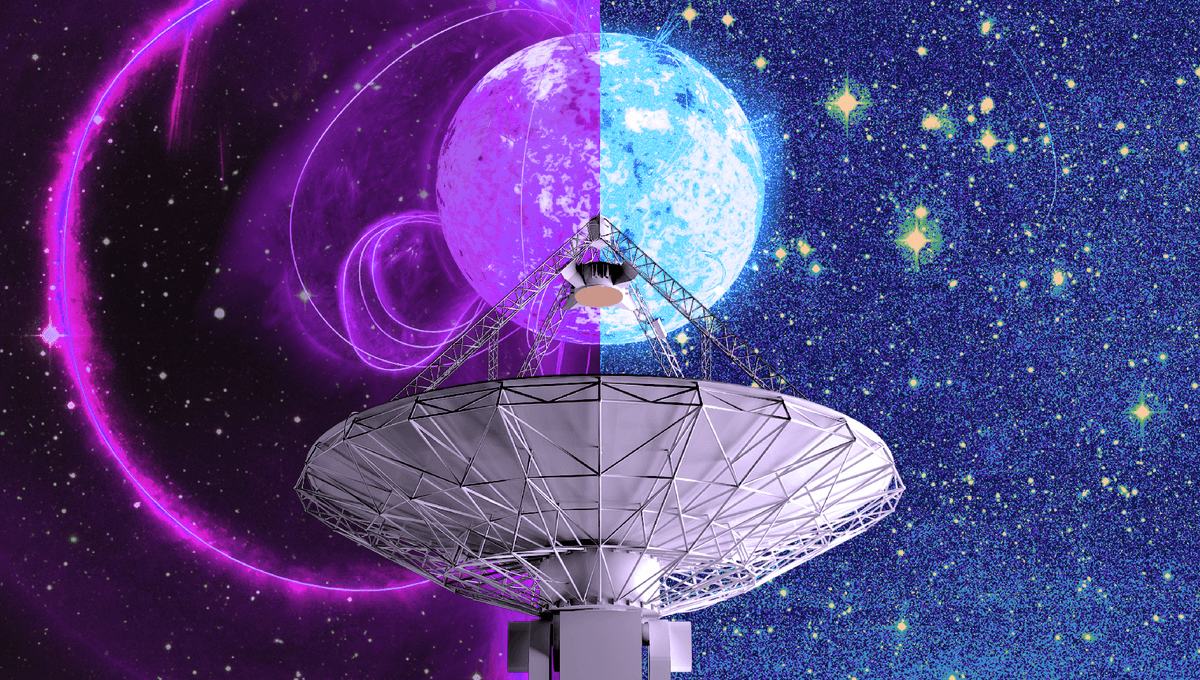
Neutron stars are the end product of certain supernovae. Massive stars collapse on themselves and then explode, leaving behind a dense object which in many cases is spinning very fast, emitting pulses of radio waves. Some of these objects spin hundreds times per second. Now, researchers report the discovery of a radio-emitting neutron star that challenges our theories – it is just too slow.
The neutron star in question is called ASKAP J1935+2148. It has a period of 53.8 minutes with three different emission states: A bright pulse of radio waves lasting between 10 and 50 seconds, a weak pulse that is 26 times fainter lasting for 370 milliseconds, and then a quiescent period.
“It is highly unusual to discover a neutron star candidate emitting radio pulsations in this way. The fact that the signal is repeating at such a leisurely pace is extraordinary,” lead author Dr Manisha Caleb from the University of Sydney Institute for Astronomy, said in a statement.
The two pulses have seen evolving over a period of eight months, and the quiet period was seen to interspersed between the two. The scientists believe that this is evidence that whatever is causing the emission is changing. The object was discovered with the ASKAP telescope on Wajarri Yamaji Country in Western Australia, and got support from another radio observatory, MeerKAT. Both are precursors to the Square Kilometer Array.
“What is intriguing is how this object displays three distinct emission states, each with properties entirely dissimilar from the others. The MeerKAT radio telescope in South Africa played a crucial role in distinguishing between these states. If the signals didn’t arise from the same point in the sky, we would not have believed it to be the same object producing these different signals,” Dr Caleb added.
There is something quite important to know about neutron stars and radio waves: Astronomers are not exactly sure how they produce radio emissions. There are theories that can explain part of the behavior or specific instances, but an object like this is a challenge.
Perhaps it is not even a neutron star. While the proposed explanation fits better, even with this truly unique behavior, researchers have an alternative option: A white dwarf with an exceptional magnetic field. A white dwarf is another end-of-life option for stars, those big enough to become red dwarfs but not big enough to go supernova.
A white dwarf with a magnetic field as powerful as those necessary to create this signal has never been found, but it is possible to exist. Or maybe it is a binary system, featuring another neutron star or white dwarf. More observations are necessary, and they are certainly exciting, whatever new insights they bring.
“It might even prompt us to reconsider our decades-old understanding of neutron stars or white dwarfs; how they emit radio waves and what their populations are like in our Milky Way galaxy,” Dr Caleb said.
A paper discussing the discovery is published in the journal Nature Astronomy.
Source Link: Weird Signal From Space In A Completely New Stellar Behavior